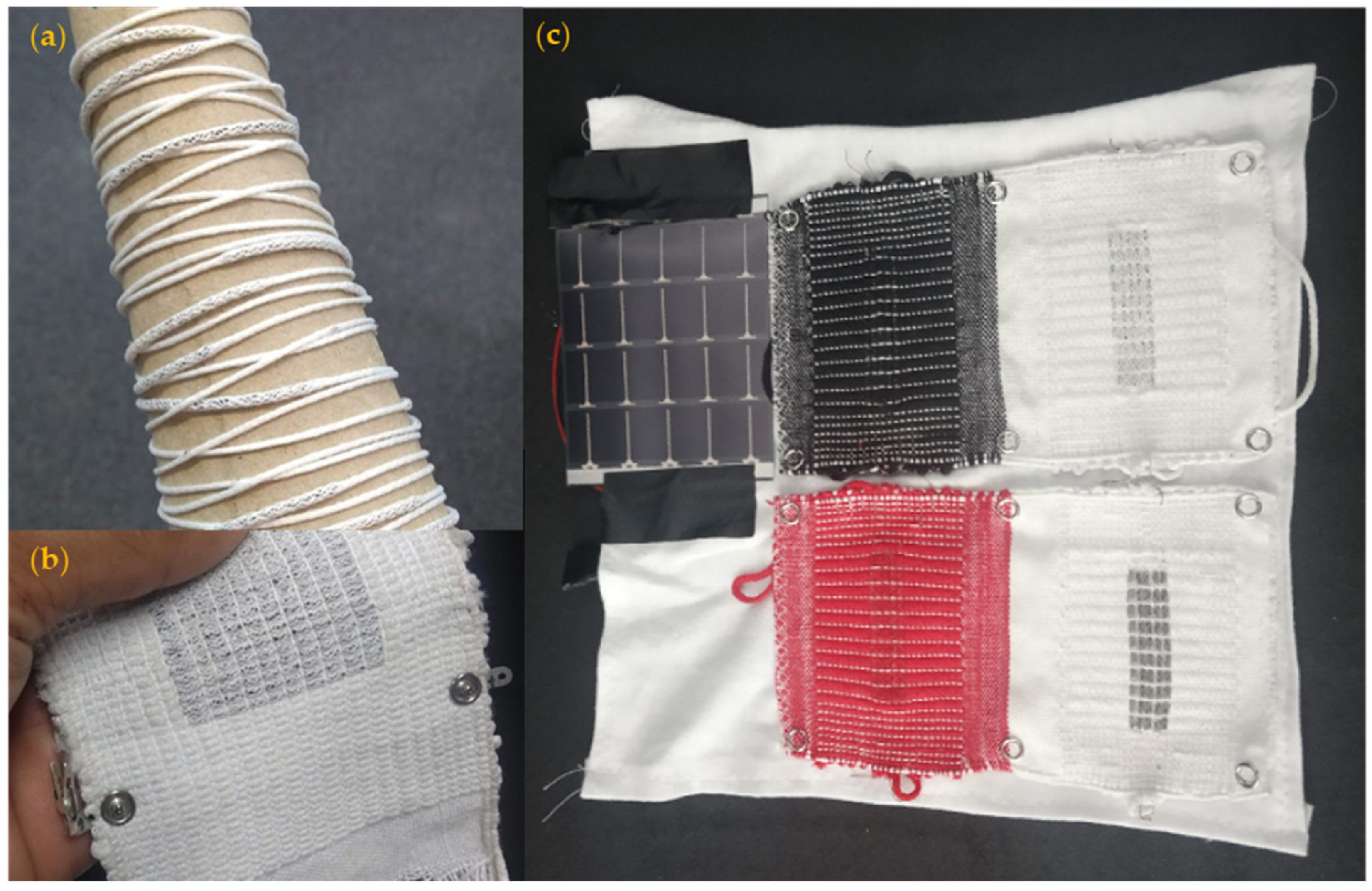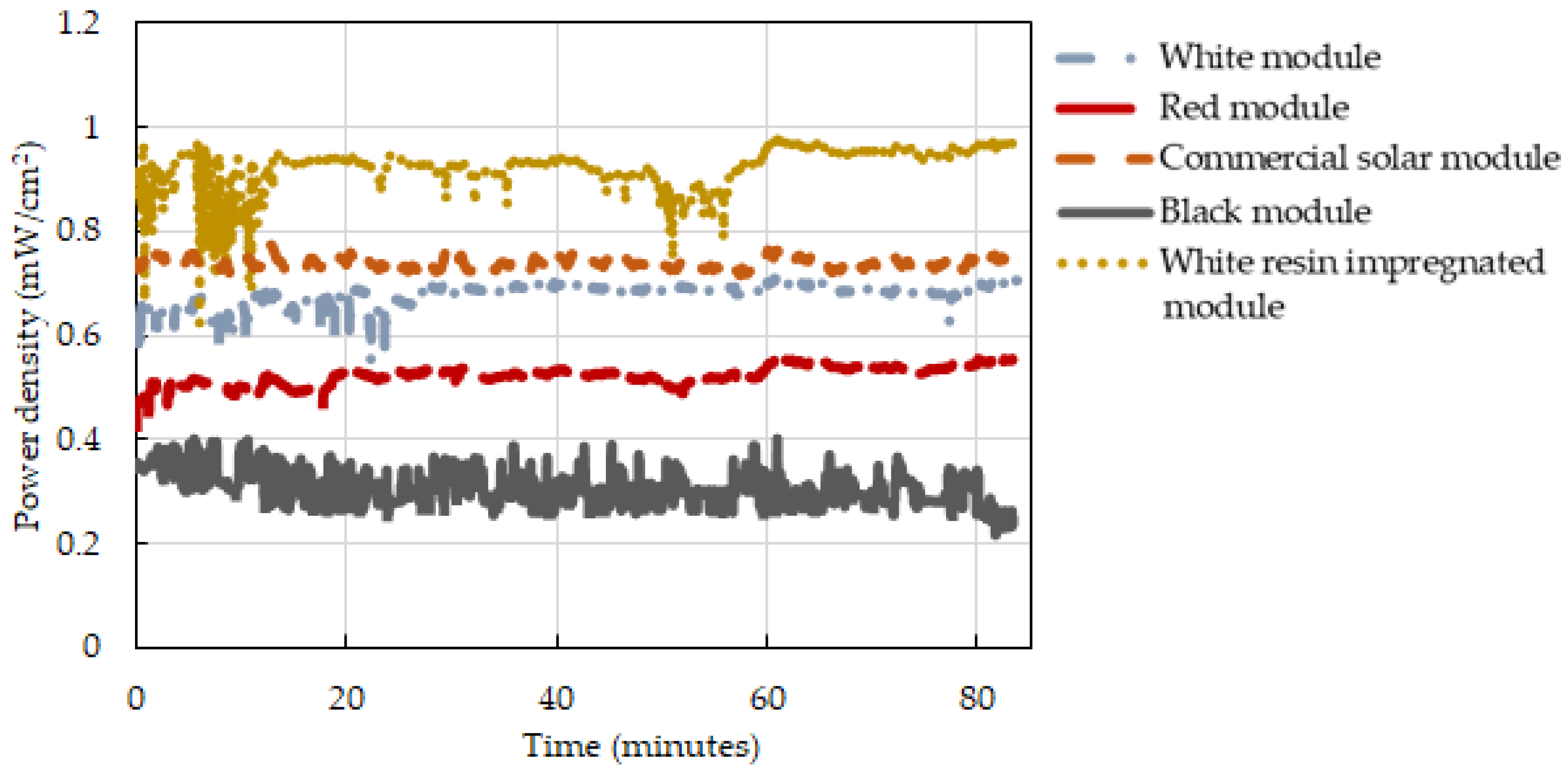Solar Energy-Harvesting E-Textiles to Power Wearable Devices †
Abstract
:1. Introduction
2. Materials and Methods
2.1. Solar Energy Harvesting Fabric Construction
2.2. Charging Performance
2.3. Field Test Procedure
3. Results
3.1. Charging Performance of the Solar Energy-Harvesting Fabric
3.2. Solar Energy Harvesting-Fabric Field Tests
Author Contributions
Funding
Acknowledgments
Conflicts of Interest
References
- Satharasinghe, A.; Hughes-Riley, T.; Dias, T. Photodiodes embedded within electronic textiles. Sci. Rep. 2018, 8, 16205. [Google Scholar] [PubMed]
- Chen, J.; Huang, Y.; Zhang, N.; Zou, H.; Liu, R.; Tao, C.; Fan, X.; Wang, Z.L. Micro-cable structured textile for simultaneously harvesting solar and mechanical energy. Nat. Energy 2016, 1, 16138. [Google Scholar] [CrossRef]
- Chai, Z.; Zhang, N.; Sun, P.; Huang, Y.; Zhao, C.; Fan, H.J.; Fan, X.; Mai, W. Tailorable and wearable textile devices for solar energy harvesting and simultaneous storage. ACS Nano 2016, 10, 9201–9207. [Google Scholar] [CrossRef] [PubMed]



© 2019 by the authors. Licensee MDPI, Basel, Switzerland. This article is an open access article distributed under the terms and conditions of the Creative Commons Attribution (CC BY) license (http://creativecommons.org/licenses/by/4.0/).
Share and Cite
Satharasinghe, A.; Hughes-Riley, T.; Dias, T. Solar Energy-Harvesting E-Textiles to Power Wearable Devices. Proceedings 2019, 32, 1. https://doi.org/10.3390/proceedings2019032001
Satharasinghe A, Hughes-Riley T, Dias T. Solar Energy-Harvesting E-Textiles to Power Wearable Devices. Proceedings. 2019; 32(1):1. https://doi.org/10.3390/proceedings2019032001
Chicago/Turabian StyleSatharasinghe, Achala, Theodore Hughes-Riley, and Tilak Dias. 2019. "Solar Energy-Harvesting E-Textiles to Power Wearable Devices" Proceedings 32, no. 1: 1. https://doi.org/10.3390/proceedings2019032001





